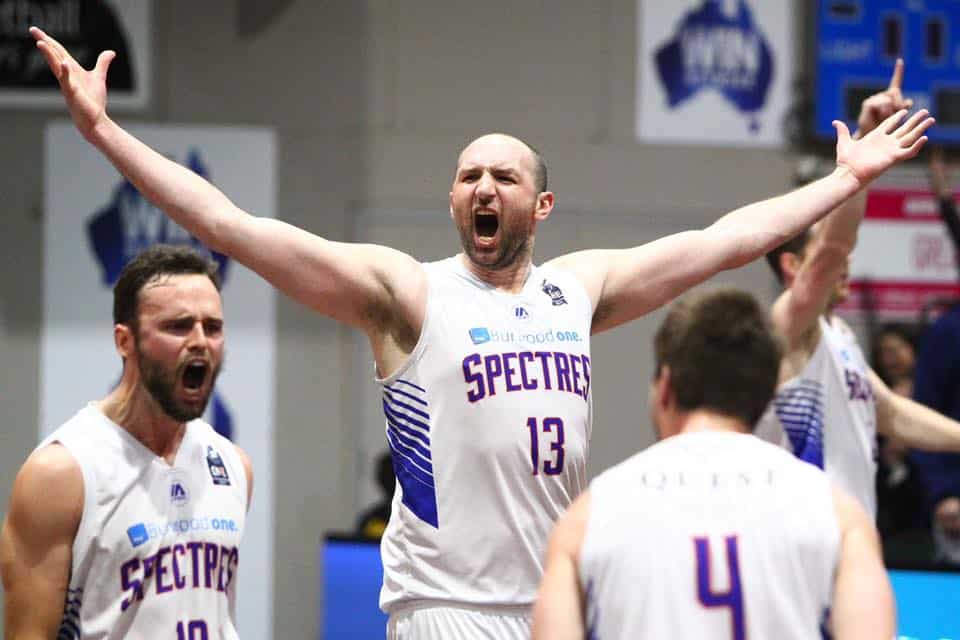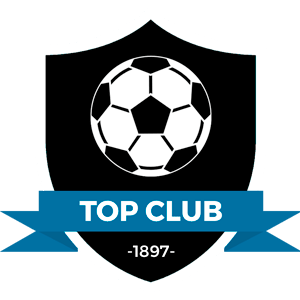
Australian basketball has had strong talent playing at the state level since the 1960s, but many Aussie basketballers left their trace on the game without ever playing in the NBL.
Some became greats within their own local associations, some opted for playing overseas instead, and others made NBL squads, but fate prevented them from ever logging minutes in an NBL game.
We bring you the best aussie basketball players to never play in the NBL.
Note: This list doesn’t include our Aussie talent currently playing in the NBA or overseas who may return to play in the NBL before their career is over, e.g., Ben Simmons, instead of those who have reached the end of their playing careers already.
Carlin Hughes
Perth-born point guard Carlin Hughes joined the Perth Wildcats program at 17 and, after being mentored by the legendary Ricky Grace, earned a scholarship to the Australian Institute of Sport (AIS).
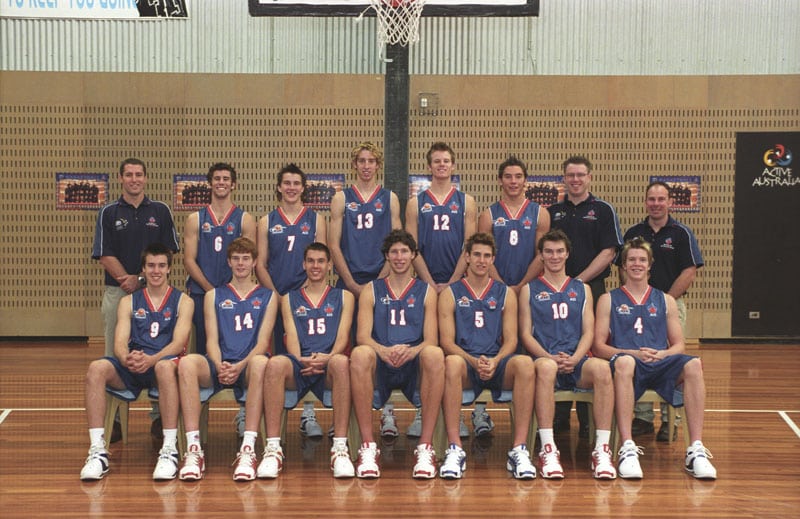
2004 AIS Men’s Squad: (L-R): Martin Clarke (Head Coach), Carlin Hughes, Ryan Kersten, Josh Wood, Brad Newley, Adam Gibson, Paul Mesecke (Scholarship Coach), Paul Gorris (Assistant Coach) Front (L-R): Brad Hill, Thomas Garlepp, Alex Opacic, Sam Harris, Ben Allen, Jeff Dowdell, Lucas Walker
Teaming with future NBL stars Brad Newley, Adam Gibson and Tom Garlepp, his play for the AIS in the SEABL state league gained the attention of US college scouts.
Hughes played four years in the NCAA playing, his freshman and sophomore years at Montana State University before transferring to St Mary’s University (California) for his junior and sophomore seasons, where he played alongside fellow Aussies Patty Mills, Clint Stiendl, Ben Allen
In his senior year, his outside shooting helped propel him into the team’s starting five alongside future NBA stars Mills and Diamon Simpson. Together, the St Mary’s Gaels reached the West Coast Conference in both seasons.
After graduating, the sweet-shooting guard returned to Australia to play in the NBL until he suffered a wrist injury that required a full reconstruction and a year of recovery.
“The year I took off to recovery from that injury I spent working for Chevon, an oil and gas company. Once I got healthy I had some interest from clubs but at that stage I had to make the very difficult decision whether to play NBL for a few years, maybe seven, or stay with Chevron and build a career with them, which could last my entire working life” said Hughes.
Ultimately, he chose the security of working for a company that he felt was more financially viable and could provide a longer career.
Hughes would continue to play for his junior association in Rockingham Flames for two seasons in the SBL state league, averaging 14 points per game before focusing on life after basketball.
“I really cherish my times at the AIS, College and Australian teams. When you’ve been on those realms, you understand and appreciate the work involved to get and stay there.
The relationships you establish are lifetime. When you’re in the moment, you really don’t understand what you have. When you get older, you really understand what a great opportunity we had and something we all have in common” said Hughes.
Scott Pendlebury
Before he was captain of the Collingwood Magpies AFL team, Scott Pendlebury was the number one basketballer in his age group. According to the popular story, he was given an AIS scholarship over future NBA champion Patty Mills.
He played his junior basketball with the Sale Basketball Association in country Victoria before moving to Canberra, where he once played with the AIS SEABL team at only 15 years of age, teaming up with 17-year-olds Brad Newley, Tom Garlepp, Adam Gibson, Lucas Walker, and Carlin Hughes.
“The only thing I remember clearly about playing SEABL with the AIS was one game I had 11 points and 9 boards and the reason I remember it is a coach told me I almost had a double-double and at the time I didn’t know what that even meant” joked Pendlebury
“Oh and a 17 year old Brad Newley was doing that most vicious dunks I had ever seen”
Pendlebury would earn All-Star Five honours for Australia at the Under 17 and world championships and don the green and gold again for the 2004 Albert Schweitzer Tournament (a prestigious German tournament considered an unofficial world championship for the Under-18 age group).
Only ten months before being drafted to the AFL, Pendlebury teamed up with future NBA stars Mills and AJ Ogilvy to play in the Youth Olympics in 2004.
The 191cm Pendlebury started as Australia’s point guard and played against Slovenian Goran Dragic and Spain’s Sergio Rodriguez, who both went on to have NBA careers. Pendlebury more than held his own in each matchup.
“After I had made the move to the AIS my friends back home were all playing footy and it made me want to play footy bad, which is something I hadn’t felt in a long time. At the time my plan was just to play a year of footy with my mates and then come back to basketball after that but that all changed once I got drafted” said Pendlebury.
It is interesting to consider how far Pendlebury could have gone with his basketball if he had stuck to a Spalding instead of a Sherrin. Although he was clearly the best junior basketballer in the country in his age group, he also gave up the game at 17.
“As a kid I always thought about playing college basketball and then see what my options were after that be it the NBA, Europe or the NBL” said Pendlebury.
“Playing for Australia was awesome but for me, winning the VJBL tournament in Melbourne on Friday nights with my local team, the Sale Sonic’s was my real highlight. From where we started to how we finished the transformation was unbelievable… and from a little country town, back then that felt incredible to me”.
Rhys Newsome
Rhys Newsome is perhaps one of the unluckiest players on this list. Despite being a development player for the South East Melbourne Magic in 1996, the sharp-shooting point guard never took to the court.
Newsome, while being a valued teammate, only played in the team’s preseason games and never played minutes in an NBL game.
“Rhys was a great teammate who went hard at our training’s then obviously went on to become a Frankston Blues legend” said Mike Kelly, the Magic’s starting shooting guard in 1996.
Newsome would play for his hometown Frankston Blues from 1989 to 2005, setting the record for games played and leading the team to five state championships.
His experience with the Magic was paid off for the Frankston Blues, where he dominated the state league and led the team to back-to-back SEABL championships in 1992 and 1993 and then another for good measure in 1995.
The 187 cm guard then shifted to a bench role, but his veteran leadership and steady head helped the team record its fourth and fifth conference championships in 1998 and 2000.
A sixteen-year career in Frankston, five state championships, and countless individual state-level awards saw Newsome firmly leave a mark on basketball in Victoria, but never with an NBL team.
Hugh Greenwood
Greenwood was a talented junior footballer who, at 16, accepted an AIS scholarship to pursue his dreams of playing in the NBA. He spent four years at the Institute of Sport, competing in the SEABL team between 2008 and 2010. He then played one season for the Hobart Chargers in 2011.
Australian Boomers coaches took notice of Greenwood at 17 years of age, and he was rewarded with a spot in the national team, playing in the 2015 Oceania Championships, becoming one of the youngest players to ever play for the Boomers squad.
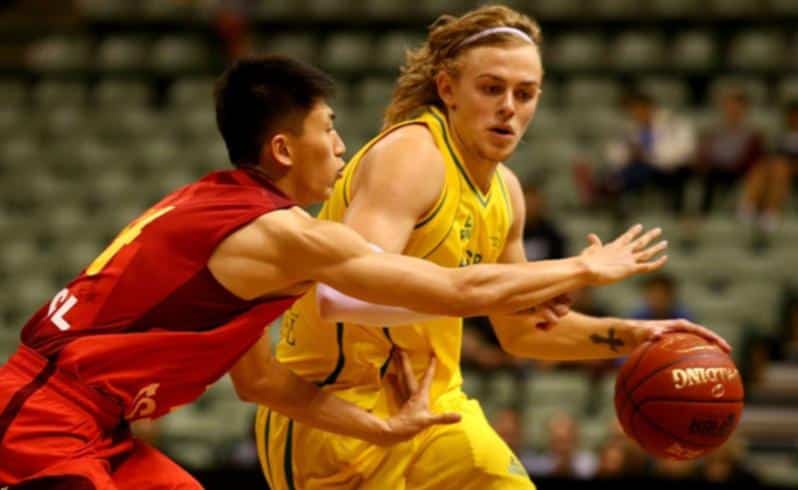
PERTH, AUSTRALIA – MAY 29: Hugh Greenwood of Australia brings the ball up the court against XiaoYu Liu of China during the 2014 Sino-Australia Challenge match between Australia and China at Challenge Stadium on May 29, 2014 in Perth, Australia. (Photo by Paul Kane/Getty Images)
Greenwood also played for the Australian Emus under-19 basketball team at the 2011 FIBA Under-19 World Cup, where he was named to the All-Tournament Team after averaging 17 points, 4 rebounds and 3 assists per game, including a 26-point haul against the United States.
He accepted a scholarship to play college basketball with the University of New Mexico from 2011 to 2015, where he averaged 12 points, 5 rebounds, and 3 assists per game.
This earned the 191 cm point guard interest from the NBA’s Utah Jazz, who invited to to try out prior to the 2015 NBA draft.
“Playing for the Boomers at 17, captaining the under-19 national team and working out for Utah Jazz are things I’m really proud of achieving” said Greenwood.
Ultimately, Greenwood would go undrafted, and with dreams of an NBA career seemingly out the window, he signed a three-year contract to play in the NBL with the Perth Wildcats.
During this time, his drive to play basketball had waned, and two days out from his first Wildcats practice match, he decided instead to return to football and swapped the NBL for the AFL, joining the Adelaide Crows at pick 48 in the rookie draft.
“In 2015 After falling down the pecking order for the 2016 Olympic team, I decided I needed a fresh start and wanted to chase a new dream and that dream was playing AFL football” said Greenwood.
To throw a 10-year basketball career away was a lot tougher than I thought and I took a while to get used to it.”
Greenwood has since said he would be keen to return to the hardwood but that would be when his AFL career is done and dusted.
“I have always said I would love to play basketball one day, and the best-case scenario would be to play in Tasmania. My goal when it’s all said and done is to be involved with the NBL in some capacity.
Ideally I want to play and contribute, but if that can’t happen coaching or mentoring players would just as rewarding as well.” Greenwood said.
Brad Salter
Another kid grew up playing basketball in the small town of Sale, 2.5 hours away from Melbourne. Among a population of 15,000, there weren’t many chances to play in front of elite basketball coaches.
Despite this, the 188cm guard carved out a nice hoops resume playing in Victoria’s state leagues.
“Playing my junior basketball in a small country town and choosing focus on my university degree and not to go to College in the States probably didn’t give me the level of exposure that might typically align with the pathway to play NBL” said Salter.
Salter moved to Melbourne for university and only then started playing a high level of basketball. He joined the Werribee Devils in 1996 and played in the BIGV and now defunct VBA state league.
“In the late 90’s the VBA was tough. You had three NBL squads (Melbourne, North Melbourne and South East Melbourne) and 8 SEABL teams. I went up against and the top two VBL teams. I went up against the best players in the country on a weekly basis.
In one game against the Tigers, I recall (Andrew) Gaze dropping 53 on us and (Lanard) Copeland in my ear the whole game. We gave them a fright early on and finished the game losing by only 14 points.” said Salter.
The understated Salter, whose canny skills at the point, made him appear as though he was making decisions in slow motion. He was a regular part of Melbourne Tigers’ pre-season squads. He regularly trained with the teams and travelled with the team overseas, but with the Tigers loaded at guard with Gaze, Copeland and Darryl Corletto and the fact he was in his mid-twenties by the time he was on the team’s radar, an NBL opportunity never eventuated.
Salter would play thirteen seasons with the Werribee Devils, many alongside Melbourne Tigers stars like Warrick Giddey, Brett Rainbow, and Blair Smith, who saw firsthand that he had the skills to play in the national league.
“I just don’t think skinny 6’2 point guards were hot property for NBL teams in the 90’s” Salter jokes.
“If I went to college or played in Melbourne more as a kid maybe things would have been different but for me it always came back to just enjoying the game and playing with my mates”
Now, Salter passes on his hoops knowledge to the young ballers he coaches alongside his own children through the Wyndham Basketball Association.
“I had so many amazing experiences and opportunities through playing that I now get to share with my kids. I have an avenue where I can pass on all my leanings and knowledge from some of the best coaches and players in the country to young aspiring hoopers… but I’ll confess I still prefer a strong drive over the three ball” said Salter.
Kurt Russell
In 1995, 15-year-old Kurt Russell, one of the talented junior players in the Townsville Tropics basketball program, signed a scholarship to regularly train, work out, and perform individual work with his hometown NBL team, the Townsville Suns.
Townsville stars like Brad Davidson, David Penissi and Peter Crawford all helped Russell develop his game, which unsurprisingly earned him a scholarship to the AIS in 1998.
There Russell was a solid contributor playing alongside future NBL champions like David Andersen, Stephen Black, Adrian Majstrovich, and Bradley Sheridan in the SEABL state league.
During his year at the AIS, Townsville remained in contact with Russell, and when his scholarship ended in 1999, he was signed as a development player for two seasons.
“It was amazing being a part of the Townsville Crocodiles during those years but at my position they were fairly covered with players like Rob Rose, Sam MacKinnon, Brad Davidson, Mike Kelly and Peter Crawford so even though I got to suit up in a couple of pre-season games. scored some points, got some rebounds. My opportunity wasn’t to be” Russell said.
The 197 cm small forward would continue to compete in the SEABL and remained on the radar of many NBL coaches. Russell went on to have tryouts with the Canberra Cannons in 2002 and the Adelaide 36ers, Perth Wildcats, and Hunter Pirates in 2003, narrowly missing out on an NBL contract at each one.
“In 2003, I was actually on a verbal contract with the Hunter Pirates. I was in America on a tour when Bruce Palmer tracked me down. I came back from the tour, resigned at my job, packed everything up and then was informed by Pirates Management that there was no budget to actually offer me a contract” said Russell.
Russell retired from basketball in 2012 after playing over 280 state league games, the majority with the Mount Gambier Pioneers. In 2003, Russell was named Under 23 Conference Player of the Year over Andrew Bogut en route to the ABA national final, where he dropped 45 points and was named Finals MVP.
Russell continues to be involved with the Pioneers as a board member, life member and junior coach.
“My NBL dream wasn’t meant to be. but i wouldn’t change anything along that way my basketball career went. I knew in my prime I could handle myself at that level. I really wanted to show that I could compete at that level. but it wasn’t meant to be” said Russell.
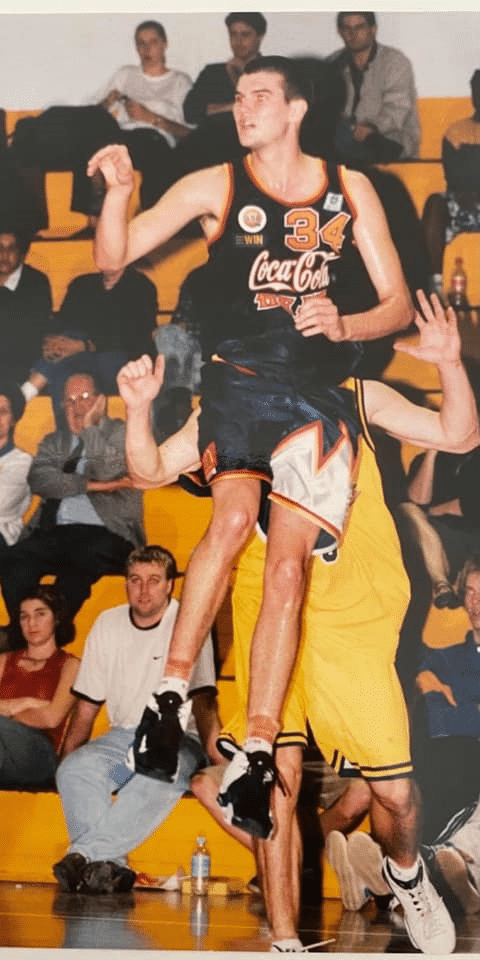
Simon Conn
At 24, Conn signed a deal to play with the South Dragons in 2008 after a five-year stint at Gardner-Webb University in North Carolina and one season in the Polish national league.
After playing only one pre-season game, scoring two points, Conn was cut from the team for “disciplinary reasons”.
Conn, 209cm, plied his trade in Victoria’s state leagues, hoping to overcome any negativity and return to the national league, but the call from NBL teams never came.
“I got a couple of opportunities in the early days,” Simon Conn told NBL.com.au
“One year I signed with the South Dragons and then I hurt my knee and needed to have knee surgery, so that kind of went away. Another year I got into a little bit of trouble off the court and that caused an issue there. Since then there’s been a few sniffs and a few interests here and there, but I think from the outside a coach can sometimes look at a style of game like mine and think it is a bit unorthodox and it is a bit awkward” said Conn
At 37 years of age, Conn led the Nunawading Spectres in points, rebounds, and blocked shots last season, was named to the NBL1 All-Star Five, and led the team to the 2019 NBL1 championship.
Since 2012, Conn has averaged 19.6 points and 9.5 rebounds per game, and his Nunawading coach, Dave Biwer, who played two seasons in the NBL, is certain Conn would have been a valuable player to any NBL team.
“I’m assuming that the NBL coaches have just looked at Simon on tape and didn’t do enough research into his history, his shooting percentages, how he gets his baskets, his reliability.
“I’ve been around basketball at a level for 25-30 years and he would be up there in my top two or three shooters of all time,” Biwer said of Conn.
“He just does not miss from mid-range. There are some players that you just can’t give the mid-range to. Simon Conn is one of those, it’s just like a lay-up. If he got a chance, he would have been better in the NBL than he is here because he wouldn’t have had so much attention.”





